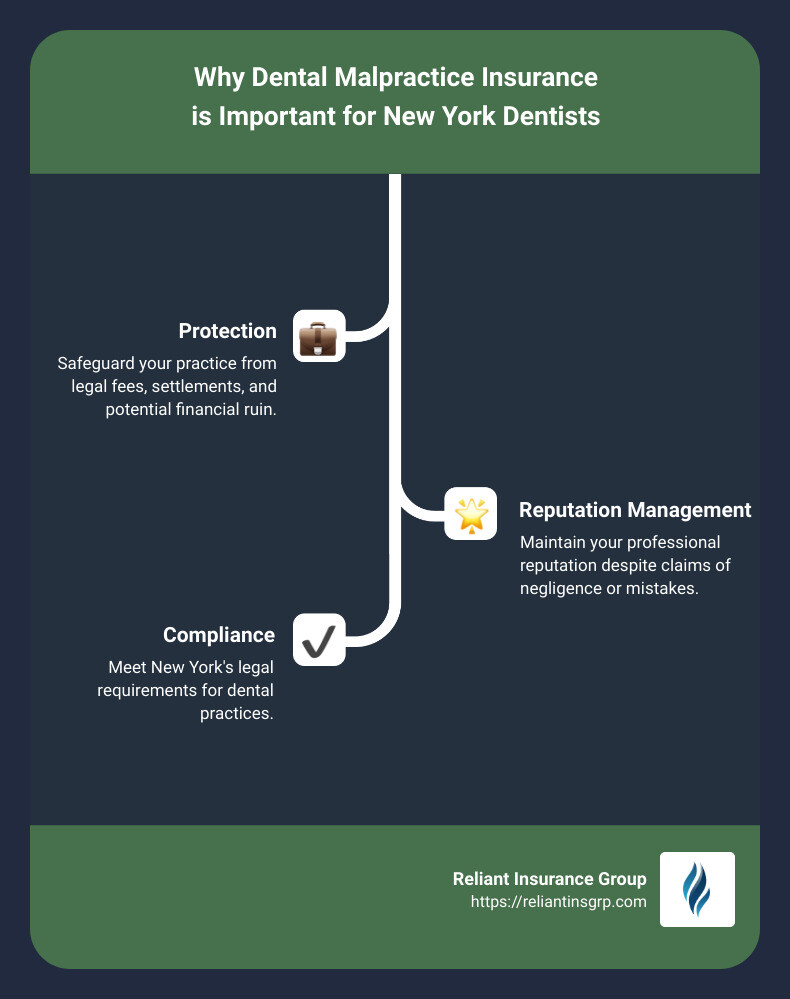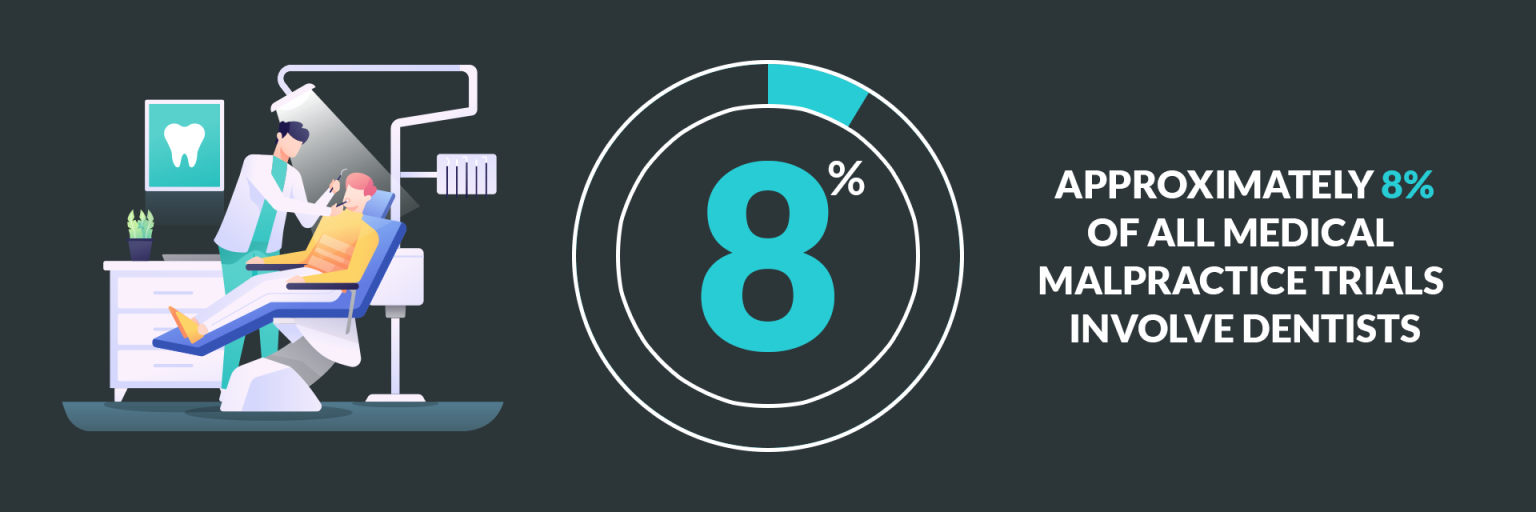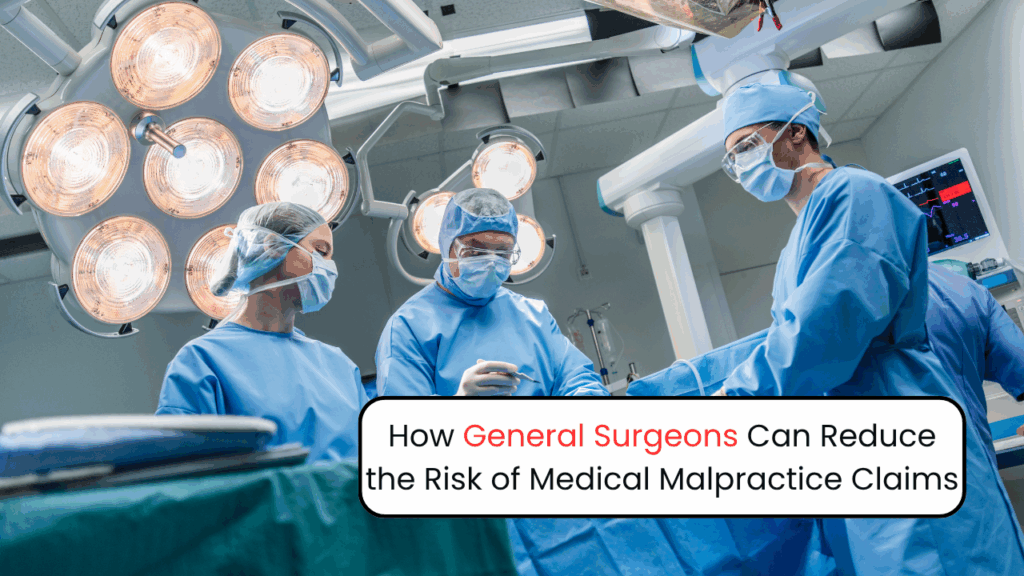If you’re a dentist or dental hygienist in the U.S., chances are one of your biggest questions before signing an insurance policy is: How much does dental malpractice insurance cost? It’s an important (and often expensive) part of running your practice or career, and with so many variables at play, costs can feel unpredictable.
But here’s the truth: the cost of dental malpractice insurance isn’t just a flat number. It depends on several personal and professional factors like your location, specialty, coverage type, and even your claims history.
Understanding what drives those numbers can help you make informed choices, budget better, and maybe even save money in the long run.
In this blog, we’ll break down the average cost of dental malpractice insurance in the U.S., explore the main factors that influence premiums, and take a closer look at how these costs differ for dentists and hygienists.
What Is Dental Malpractice Insurance?
Dental malpractice insurance is essentially your safety net. It protects you financially if a patient files a claim alleging negligence, an error during treatment, or harm caused under your care.
It typically covers:
- Legal defense fees
- Settlements or judgments
- Court costs

While many people assume malpractice insurance is only for surgeons or physicians, it’s just as critical in dentistry. Even a small procedural mistake can lead to costly legal action.
And it’s not just for dentists; dental hygienists also need protection. In fact, dental hygiene malpractice insurance cost tends to be lower than a dentist’s, but it still plays a vital role in protecting careers and finances.

Average Cost of Dental Malpractice Insurance
So, what’s the ballpark for the cost of dental malpractice insurance in the U.S.? The reality is, it varies widely. But based on data from insurance carriers, industry reports, and risk-management studies, here are some useful benchmarks:
- For many general dentists in mid-career, premiums tend to fall in the $2,000 to $3,500 per year range (i.e. ~$166–$290 per month).
- Some dentists, particularly those in higher-litigation states or with riskier specialties, may pay $8,000 to $12,000+ annually.
- For brand new dentists (first few years), there are often discounted or “new grad” rates, which can drop the cost into a few hundred dollars or a low four-figure range.
- For dental hygienists, typical annual premiums often run between $500 and $1,000, depending on location and scope of practice.
One industry insurer reports that dentists, on average, pay around $286 per month (or ~$3,430 per year) for their professional liability coverage in many cases. (This is for typical policies in average-risk contexts.)
Another source notes that specialists (e.g. oral surgeons) often pay significantly more, given the complexity and risk of the procedures they perform.
These are not guarantees but helpful benchmarks as you gather quotes.
For a deeper look at why coverage matters and how to protect your dental career from legal risks, explore this detailed guide: Protect Your Practice with Dental Malpractice Insurance.

Common Examples of Dental Malpractice Claims
Understanding the cost of dental malpractice insurance becomes clearer when you see the kinds of claims it actually covers. Dental malpractice occurs whenever the care provided falls below the professional standard expected of a reasonable dentist. Here are some common examples that often lead to malpractice lawsuits:
- Tooth Extractions: Even a routine extraction can have serious consequences. For instance, an infection after a wisdom tooth removal might require hospitalization, or a surgical error could cause lasting jaw complications.
- Endodontic Procedures (Root Canals): Instruments can sometimes break inside the canal, or perforations may occur, leading to ongoing pain, infection, or additional corrective surgery.
- Dental Implants: Improper placement of an implant can result in implant failure, nerve damage, or even bone loss. Sometimes, patients who aren’t properly instructed on aftercare face complications that could have been avoided.
- Nerve Damage: One of the more common and serious risks, nerve damage can happen during extractions, especially wisdom teeth removals or implant procedures, leaving patients with numbness, tingling, or chronic pain.
- Periodontal Disease Mismanagement: If gum disease isn’t properly diagnosed and treated, it can progress to tooth loss and systemic health issues, opening the door for malpractice claims.
These examples highlight why even highly skilled dentists and hygienists carry insurance. Mistakes happen, and sometimes outcomes are unpredictable, but malpractice insurance ensures you’re protected from the financial fallout.

Top Factors That Influence Dental Malpractice Insurance Costs
Let’s break down the biggest contributors:
1. Location Matters (State Regulations)
Insurance premiums can vary dramatically depending on where you practice. States with a higher frequency of malpractice claims or higher average payouts generally have higher premiums.
For example, a dentist in New York or California may pay more than one in a smaller state with lower litigation risks. Local regulations, mandatory coverage requirements, and even the legal climate of a state all shape the cost of dental malpractice insurance.
2. Type of Coverage: Claims-made vs. Occurrence
This is one of the most important factors.
- Claims-made policies: Cover claims only if both the incident and the claim happen while the policy is active. These [claims-made policies] usually start cheaper but increase over time. You’ll often need to purchase ‘tail coverage’ when you leave a job or retire.
Tail coverage extends protection for claims filed after your policy ends, and it’s not cheap—it’s often a one-time fee equal to 1.5 to 3 times your last annual premium. Many dentists underestimate this cost, so it’s smart to budget for it well in advance.
- Occurrence policies: Cover any incident that happened during the policy period, even if the claim is filed years later. These tend to be more expensive upfront.
Choosing between Claims-made vs. Occurrence policies, these options can make a big difference in the average cost of dental malpractice insurance.
3. Specialty and Services Performed
Not all dental work carries the same risk, and insurers adjust premiums accordingly.
- General dentists performing routine cleanings and fillings often pay base rates.
- Dentists offering advanced services, however, can see incremental increases:
- Cosmetic dentistry may add 15–25% to premiums.
- Implant services often increase costs by 20–35%.
- Oral surgery can double base premiums due to higher risks.
- Cosmetic dentistry may add 15–25% to premiums.
Even within specialties, certain high-risk procedures like full mouth reconstructions or sleep apnea treatments can trigger further premium adjustments.
Because of this complexity, it’s imperative to consult with a qualified insurance agent who understands dental malpractice risks and can provide insights tailored to your practice.
4. Experience Level and Career Stage
If you’re just starting out, you may be wondering: How much does dental malpractice insurance cost for new dentists?
Good news: new practitioners often qualify for discounts. Some insurers offer 30–50% off for early-career dentists. On the flip side, if you have decades of experience and no claims history, you may also benefit from loyalty discounts.
The takeaway: both beginners and seasoned pros may get cost breaks, depending on the insurer.
5. Policy Limits and Deductibles
Just like with auto insurance, the higher your coverage limits, the more you’ll pay. A policy with $1 million per claim and $3 million aggregate annually will naturally cost more than one with lower limits.
Dentists who want peace of mind (and higher protection) often choose higher coverage, raising the average cost of dental malpractice insurance.
6. Claims History
Your past record matters. If you’ve had malpractice claims filed against you, expect premiums to increase.
Insurance companies see prior claims as a sign of higher risk. Even one or two claims can significantly affect the cost of dental malpractice insurance. This is where risk management and strong documentation habits become vital.
7. Employment Status: Solo vs. Group vs. Employed
Where and how you practice also impacts cost:
- Solo practitioners usually pay the full premium out of pocket.
- Group practices may get discounted rates.
- Employed dentists (for example, in large dental service organizations) may have malpractice coverage included as part of their benefits.
Your role directly shapes how much dental malpractice insurance costs you personally.
8. Dental Hygiene Malpractice Insurance Cost
While hygienists generally face lower risks and fewer lawsuits, malpractice insurance is still a must-have.
- On average, dental hygiene malpractice insurance cost falls between $500–$1,000 annually.
- It protects hygienists from claims related to scaling, cleaning, or other preventive procedures that may accidentally cause harm.
For hygienists, it’s a relatively small price for major peace of mind.
How Dentists Can Manage and Reduce Costs
Here are some practical ways to keep your premiums under control:
- Shop around: Compare quotes from multiple insurers rather than sticking to the first offer.
- Check for professional association discounts: Groups like the ADA often negotiate reduced rates for members.
- Prioritize risk management: Regular training, continuing education, and proper documentation can help reduce claim risk.
- Understand your policy: Know the difference between claims-made and occurrence, and don’t overlook “tail coverage.”
FAQs About Dental Malpractice Insurance Costs
1. How much does dental malpractice insurance cost for new dentists?
Many new dentists pay less than experienced dentists initially, thanks to discounted rates. You might start around $1,000–$2,000 per year.
2. What is the average cost of dental malpractice insurance in the U.S.?
Most general dentists pay between $1,000–$3,000 annually, though specialists can pay significantly more.
3. Is dental hygiene malpractice insurance cost significantly lower?
Yes. Dental hygienists typically pay between $500–$1,000 per year, much lower than dentists.
For answers to even more common questions, visit our helpful guide on
Frequently Asked Questions: Dental Malpractice Insurance
The cost of dental malpractice insurance may feel like a mystery at first, but once you know the factors, location, coverage type, specialty, career stage, and more, it becomes easier to understand why you’re being quoted a certain price.
The average cost of dental malpractice insurance in the U.S. ranges widely, but whether you’re a new graduate, an oral surgeon, or a hygienist, the right coverage is essential to protecting your career and financial security.
So next time you find yourself asking, How much does dental malpractice insurance cost? You’ll know it depends on you, your practice, and the choices you make in coverage.





